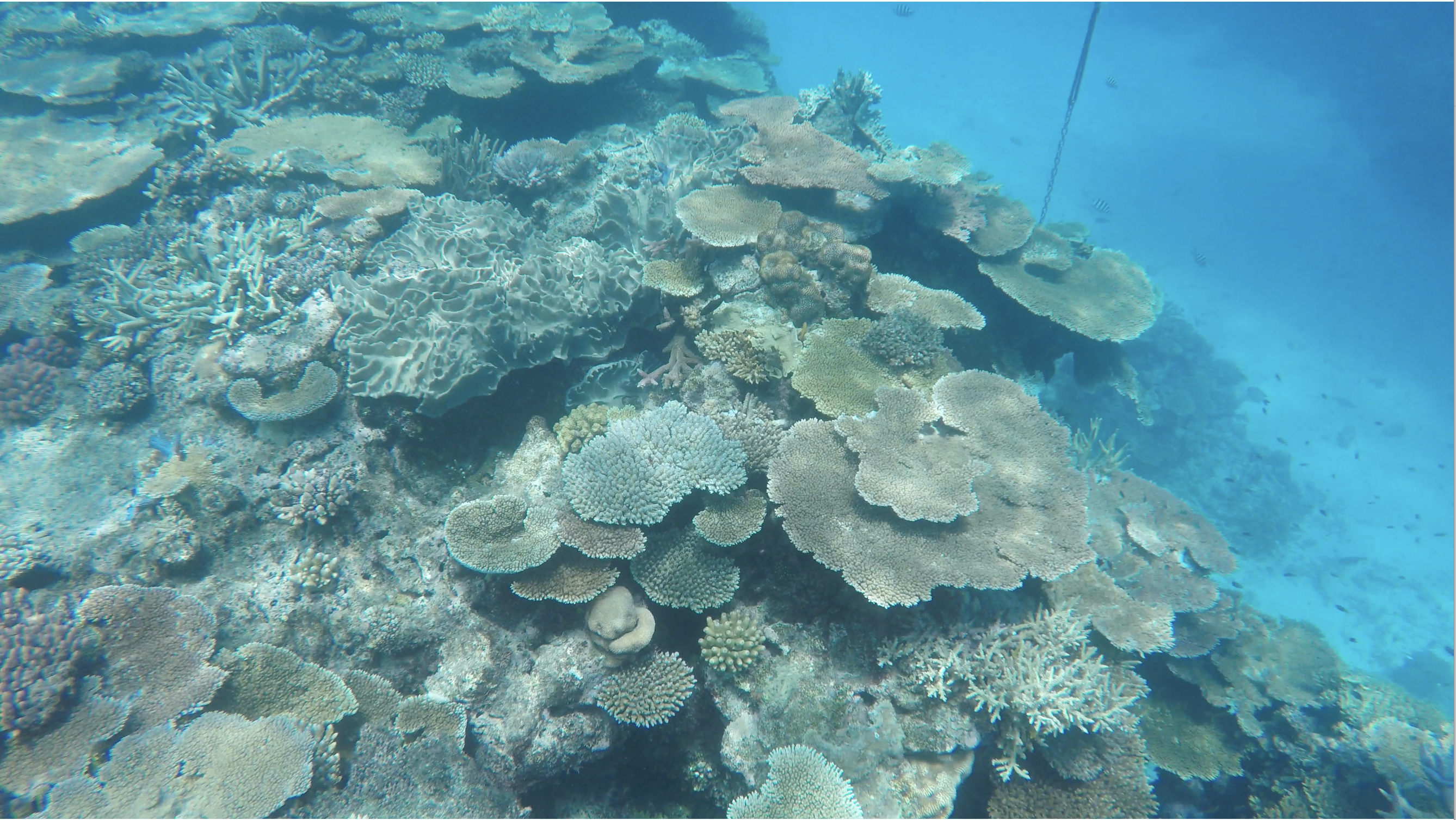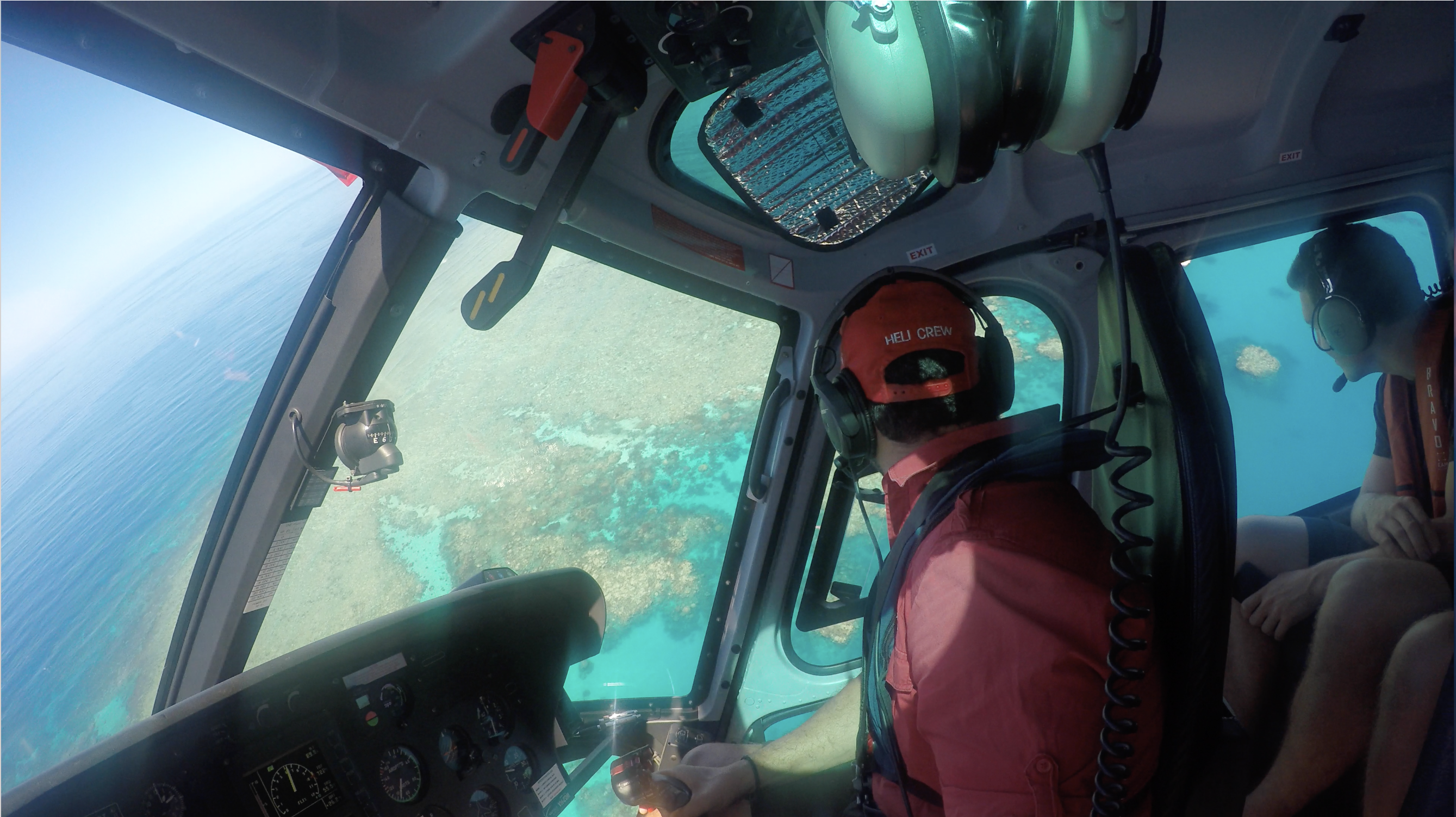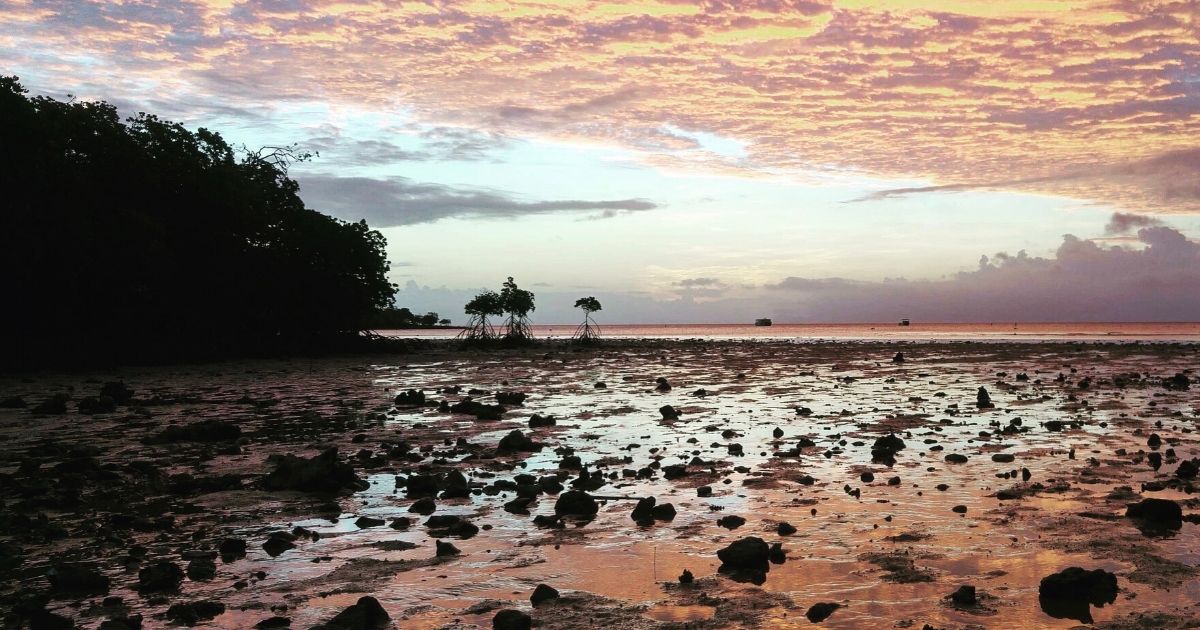We can think of global coral reefs as the major towns and cities of our world.
There are downtown areas bustling with activity—a dense reef urbanization with many residents, differing in everything from role in society, to mere stature and presence. There are skyscrapers of branching and pillar corals and giant condominiums of columnar, massive boulder and encrusting types. Small neighborhood pockets exist in lone coral heads, bound by their own rhythms and rules. The equivalence of city parks and architectural artistry is provided by foliose corals, and soft corals. There are even the more deserted zones—polyp-devoid and algae-ridden—unkept and forgotten by those still bustling along. There are the social individuals and community groups—parrotfish and surgeonfish alike—and there are those more cloistered and territorial, remiss to leave their safely guarded homes. The perfectly manicured algal lawns of damselfish species are enviable, even by a diver’s eye. There are even regular routes taken by different species, commuting to and fro over the highways and low ways of the reef. Together, the reef entity creates the structural complexity necessary to provide for the many activities of those who call it home. In a reef community, we witness the interactions and daily lives of the many who work, play, and make a living for themselves amongst the polyps. Without care, upkeep, and a strong societal foundation, the entire community will suffer.
Coral communities and sapien cities are truly not so different.
 The structural complexity of a reef, juxtaposed by human use. PC: M.Fraser
The structural complexity of a reef, juxtaposed by human use. PC: M.Fraser
Losing our coral reefs to the plethora of direct and indirect climatic stressors isn’t just a loss of natural phenomena; it isn’t just a loss of things unique and valued. Losing our coral reefs is akin to wiping out major world epicenters of diversity, culture, history, and livelihood. If London or Sydney, Abu Dhabi or Miami, were to suddenly become ghost towns, uninhabited and overtaken by weeds, the rest of the world would notice, wonder, and worry about their own futures. Our recent COVID-19 pandemic has left major world cities in near disarray, and the anxiety caused by this has been palpable. This anxiety is the sentiment that coral practitioners have felt for reef communities since the first signs of degradation appeared. From Florida and the Caribbean, to Hawaii and the Pacific—remote atolls and urbanized coastal ecosystems alike—few fully pristine reefs remain.
When ‘Coral Godfather’, Charlie Veron, first began identifying corals on the Great Barrier Reef, restoration wasn’t on most researchers’ radar. Instead, the focus was simple wonderment at the diversity of species composition and a passionate rush to understand the intricacies that define the reef; that, of course, was before beloved reefs started to degrade and loyal returnees saw first-hand the sad state of their reefs. From then on, the focus began to shift to the ‘why’ behind bleaching events, visible diseases, algal overgrowths, and ultimate mass extinctions. Thankfully, with the ability to publish research and communicate findings, along with significant advancements in assessment technologies, the world has taken notice of reef trouble and is seeking solutions. Restoring our world’s corals necessitates innovative, multi- and cross-disciplinary strategy that ultimately re-imagines what is possible and scales up feasibility to levels previously unseen.
 The structural complexity of the Great Barrier Reef, Australia, seen from helicopter view. PC: M.Fraser
The structural complexity of the Great Barrier Reef, Australia, seen from helicopter view. PC: M.Fraser
Some of the key challenges involved in restoration include the great scale of reefs themselves, the sheer cost throughout the entirety of the supply chain, as well as the compounding effects of both local water quality issues and broader climate change issues. Restoration techniques thus currently focus on the following key research-derived practices: coral farming in nurseries and subsequent out-planting; selective breeding of more resilient ‘super corals’ (i.e. gene therapy); improving local water and atmospheric quality; effective management of Marine Protected Areas; scaling up efforts to the ecosystem level and beyond; increasing coral growth rates through fragmentation and similar physical processes; utilizing helpful new technologies, such as spatial databases and photomosaics; efficient data sharing platforms; and overall enhanced communication strategies amongst stakeholder groups. Overall, there is more and more recognition for a wholistic, integrative approach that recognizes the interdependence of the different techniques on one another and the need to embrace a socio-economic understanding of reef value within the blue economy.
There is now a worldwide presence in the restoration community—NGOs, Universities, Government agencies, and independent researchers—all working toward the greater goal of restoration—either indirectly through research or directly through restoration practices. Highlighting just a few organizations showcases both the range and the diversity of the global restoration footprint:
- The National Oceanic and Atmospheric Administration (NOAA)’s Coral Reef Conservation Program is 20+ years old. NOAA’s recently developed ‘Mission: Iconic Reefs’ initiative seeks to restore seven key reef sites within the Florida Keys National Marine Sanctuary through a robust, well-developed management plan.
- The Coral Restoration Consortium (CRC) is a large community focused on restoration, and brings together diverse groups working to achieve thriving coral reef ecosystems into the 21st century.
- The Nature Conservancy’s Reef Resilience Network connects marine managers with the latest science, restoration information, and leading capacity building techniques.
- The Coral Restoration Foundation in Key Largo, Florida, is currently the largest coral reef restoration organization in the world.
- Mote Marine Laboratory’s restoration strategies focus on optimization and diversification of coral genotypes in light of common, local coral diseases.
- SECORE International works toward worldwide reef conservation through multiple research, education, outreach, and restoration approaches.
- Coral Vita of Grand Bahama utilizes a more commercialized approach to restoration through coral adoption and a clearly communicated restoration process from start to finish.
- Reef Ecologic, an Australian marine environmental consultancy, operates coral restoration activities both in Australia and Thailand and is involved in underwater art restoration projects.
- The Australian Research Council’s Centre of Excellence in Coral Reef Studies collectively joins together the largest concentration of coral scientists in the world.
- Corales de Paz is the Reef Check coordinator for Colombia and relies on a ‘meaningful diving’, citizen-science approach to restoration and monitoring.
- Fragments of Hope constitutes Belize’s main monitoring and restoration efforts, focusing on sustainable management through community involvement.
- The Hawaii Division of Aquatic Resources has nurseries tailored for both endemic restoration purposes and to serve as a ‘mitigation bank’ of sorts against potential future loss.
- Raising Coral Costa Rica focuses on restoring both the reefs and the subsequent ‘symbiotic partnership’ of people and the ocean environment.
While these organizations are all key players in the restoration sector, they by no means exhaustively showcase the full restoration effort. Countless individual researchers, organizations, and companies—some with seemingly polar-opposite foci—are involved in restoration. It is these collective efforts that help to ensure coverage in assessment, monitoring, and restoration for the world’s coral reefs.
Despite all of this good work, the restoration world is still relatively young and needs continual support, from funding and manpower, to sheer semantics. To combat the latter, a team of international coral researchers, managers, and practitioners will begin the process of aggregating a comprehensive glossary on coral restoration terms and standard metrics. The project, part of the CRC management working group, seeks to provide clear definitions for words and practices used in the restoration sphere. A previous glossary does not exist in the literature simply because of the relative novelty of the coral restoration field and the continuous need to establish cohesive communication. The global coral restoration community works in many different countries and cultural settings. The terminologies used to describe key restoration practices and definitions have thus varied. In an already difficult to navigate, novel field, it’s best to have clear definitions readily available. A glossary would provide verbiage commonality that is critical to achieving restoration goals. The planned glossary comes before the next major coral restoration conference—Reef Futures 2021—to take place May 17 to 21 of that year in Key Largo, FL. Similarly, the 14th International Coral Reef Symposium (ICRS) will take place July 18 to 23 of 2021.
When a city faces threats, its governing agencies develop strategic plans to combat those threats and plan for a better, more resilient future. Our world reefs need these strategic action plans to protect themselves against the threats they face. A functioning city requires active citizen involvement. It’s time we better understood both our role as citizens within the reef community and, as Dr. Petersen, SECORE International, states, that ‘the true capabilities of coral restoration have not been exhausted yet.’ Let’s research with fervor, think with innovation, and work as if the coral reefs are themselves our home, because ultimately, they are.
By Megan Fraser





